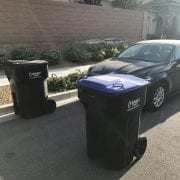I Just Passed My Nevada Driving Test!
Passing your behind the wheel test and getting your driver’s license is a rite of passage all over Nevada. At that moment, you are now authorized to drive a car…..alone. An adult no longer has to ride with you. You are now free to drive whenever and with whomever you wish. Or are you? Nevada has laws governing a new teen driver’s driving privileges. It isn’t a free-for-all once you pass the behind the wheel test. The reason these laws were passed is simple. Newer teen aged rivers are less experienced, more prone to accidents and far more prone to distractions than those drivers who have been driving for awhile. For these reasons, Nevada has instituted a “graduated driver’s license”, or GDL. The idea is to gradually give the new driver more freedom and more responsibility, rather than setting them up for failure because they lacked the experience to handle either. Now that we understand the logic behind the program, let’s be clear about what you can and cannot do as a newer teen driver.
Step one. It all starts with a learner’s permit. Once a Nevada teen turns 15½, they are eligible to take the learner’s permit written exam. Provided they pass this exam and their parents or guardians approve, the permit is issued.
Step two. Once you have the permit, you must drive with a licensed driver for 50 hours. This driver must be 21 years of age or older and must have been licensed for at least a year. 10 hours of the 50 hours must be driven at night. A log of these hours must be kept and signed by the parent or guardian attesting to the fact that you actually drove these hours. If you pencil whip (cheat) the log book, instructors at the DMV can tell when you take your test because your inexperience shows. You will have a very difficult time passing and, if found out, the DMV will not issue your license. It is unlawful to forge the logbook.
Step three. Once you turn 16 and have completed the required 50 hours, you are eligible to take your behind the wheel test. Once passed, you now have full driving privileges, but with a catch.
- For the first six months, you cannot drive with anyone under the age of 18 in your vehicle unless they are an immediate family member. The reason for this is simple. Newer drivers are so excited to get out there with their friends that they tend to be distracted and much less safe than they would be otherwise. This restriction seeks to minimize that danger.
- . Until you turn 18, you may not drive between the hours of 10 p.m. and 5 a.m. There are exceptions to this, such as traveling to and from a sponsored event, like a school sporting event or family gathering, but it is generally not allowed. Driving around late at night right after you get your driver’s license is a sure way to get stopped by the police. Many cities have curfew restrictions, too and these apply whether or not you are in a vehicle, so be careful out there.
Step four. Once you turn 18 and you have maintained a driver’s license, you can consider yourself a driver with no restrictions. You can now officially drive when, where and with who you want to, as long as it is lawful.
Remember that violation of these laws can set you back in your quest for a license. If you are cited for an infraction of these laws, your driving privileges can be suspended. If you get caught doing it enough, the judge may deny your driving privileges until your 18. No one wants that. These laws are designed to allow you freedom, but just enough to teach responsibility, too. The state of Nevada cares about it’s driver’s and passed these laws to help foster good habits with new drivers. Keep your future in mind when you’re a new driver. You’ll be doing it a long time, hopefully.





